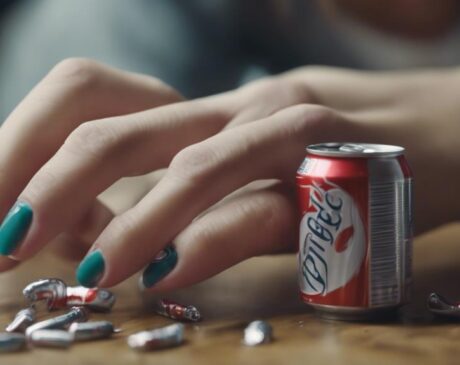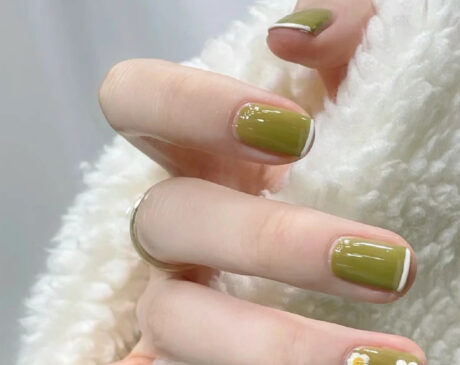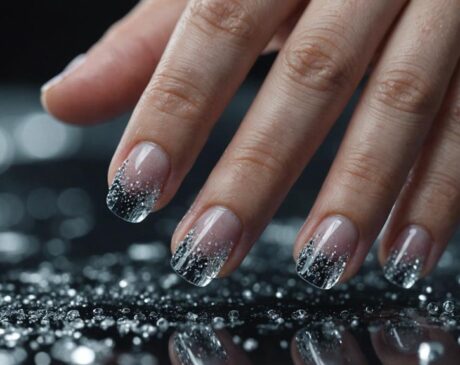Why Are Fake Nails Unsanitary?
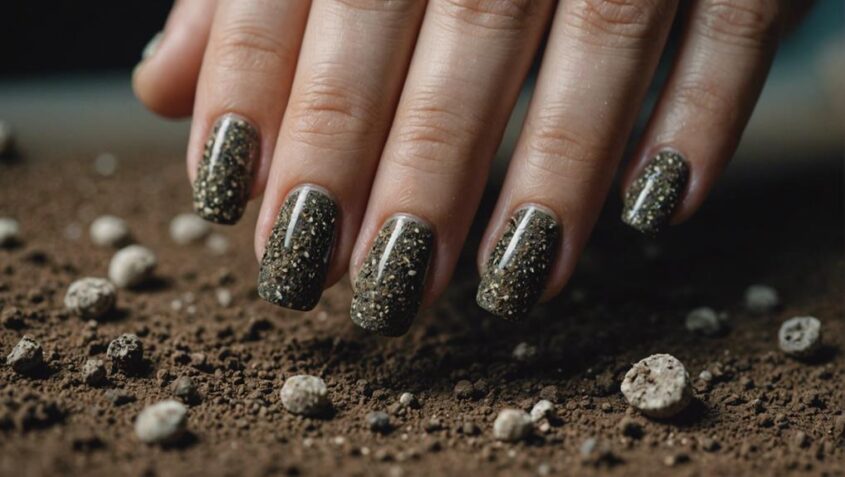
Fake nails are unsanitary due to trapping dirt, bacteria, and moisture, which can lead to infections and health issues. The difficulty in cleaning them properly adds to the risk of infection. Additionally, fake nails can damage the nail bed, cause allergic reactions, and even promote fungal growth. Sanitization of fake nails can be challenging given their design. However, with innovative technologies and materials like smoother surfaces, antimicrobial properties, and hypoallergenic options, there are ways to address these sanitation concerns. Consider how new advancements in fake nail design strive for better hygiene and reduced risks.
Key Takeaways
- Fake nails trap dirt and bacteria, raising hygiene concerns.
- Moisture retention in fake nails promotes bacterial and fungal growth.
- Increased risk of infections from trapped moisture under fake nails.
- Constant pressure and chemicals can damage natural nails.
- Sanitization challenges arise from moisture traps and debris between natural and fake nails.
Trapping Dirt and Bacteria
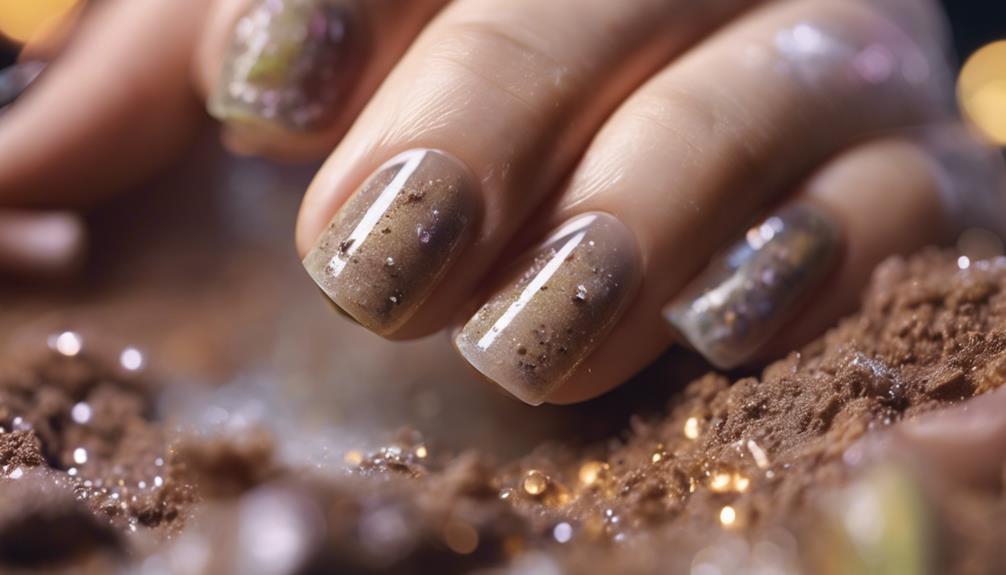
Fake nails can inadvertently trap dirt and bacteria, potentially leading to hygiene concerns. Despite their aesthetic appeal, the artificial nature of fake nails creates tiny crevices where dirt and bacteria can accumulate. This can be a particular concern for individuals who use fake nails for extended periods without proper maintenance. The trapped debris not only poses a risk for infections but also affects the overall cleanliness of the nails.
Innovations in fake nail technology have attempted to address this issue by introducing smoother surfaces and more hygienic materials. Some manufacturers have developed fake nails with antimicrobial properties to actively combat the growth of bacteria. Additionally, advancements in adhesive techniques have led to better sealing of the nails, reducing the chances of dirt getting trapped underneath.
As individuals continue to seek ways to enhance their appearance through fake nails, it is crucial to remain mindful of the potential hygiene implications. Regular cleaning, proper maintenance, and opting for newer, more hygienic options can help mitigate the risks associated with trapping dirt and bacteria under fake nails.
Moisture Retention
Moisture retention in fake nails poses a significant risk of promoting bacteria growth, potentially leading to various infections. Fungal infections are also a concern due to the warm, damp environment created by the artificial nails. Maintaining proper hygiene becomes more challenging with the added issue of moisture trapped beneath the nails.
Bacteria Growth Risk
The presence of moisture under artificial nails can create an environment conducive to bacterial growth, posing a sanitation risk.
- Moisture trapped under fake nails can lead to bacterial proliferation.
- Bacteria thrive in warm, damp environments.
- Increased bacterial growth can result in infections.
- Regular cleaning and drying can help mitigate this risk.
- Innovative nail technologies are being developed to address this sanitation concern.
Fungal Infections Potential
Artificial nails, particularly in the context of sanitation, can also pose a considerable risk of fungal infections due to the retention of moisture underneath. The space between the natural nail and the artificial extension creates a warm and damp environment ideal for fungal growth. Fungi thrive in moist conditions, and when trapped under fake nails, they can lead to various infections such as onychomycosis. This condition not only affects the nail bed but can also spread to surrounding tissues if left untreated. To mitigate the risk of fungal infections, it is crucial to keep the nails dry and clean, ensuring that no moisture is trapped underneath the artificial extensions. Regular maintenance and proper hygiene practices are essential in preventing such fungal complications.
Hygiene Maintenance Challenges
Challenges in maintaining proper hygiene with fake nails predominantly stem from the tendency of these enhancements to retain moisture, creating an environment conducive to microbial growth. This moisture retention poses several hygiene maintenance challenges, including:
- Increased Risk of Fungal Infections: Damp conditions promote the growth of fungi.
- Potential for Bacterial Proliferation: Moist environments can harbor harmful bacteria.
- Difficulty in Drying Nails Thoroughly: Ensuring complete dryness becomes a challenge.
- Odor Concerns: Bacteria thrive in moist environments, leading to unpleasant odors.
- Skin Irritation: Prolonged exposure to moisture can cause skin issues around the nail bed.
Proper hygiene practices and regular maintenance are crucial to mitigate these challenges and ensure nail health.
Risk of Infection
When considering fake nails, it is crucial to evaluate the associated risks of infection. Maintaining proper hygiene practices is essential to mitigate these infection risks effectively. Understanding the potential consequences of inadequate sanitation with fake nails is paramount in promoting overall health and well-being.
Infection Risks With Fake Nails
Maintaining proper hygiene practices with fake nails is essential to minimize the risk of infection. Fake nails can harbor bacteria and fungi if not cared for correctly, increasing the chances of developing infections. To mitigate these risks, consider the following:
- Regularly clean underneath the fake nails to remove dirt and bacteria buildup.
- Avoid using damaged fake nails, as cracks can provide a breeding ground for harmful microbes.
- Opt for high-quality materials and professional application to reduce the risk of infections.
- Keep your hands and nails moisturized to prevent dryness and cracking, which can invite pathogens.
- Monitor for any signs of infection, such as redness, swelling, or pus, and seek prompt medical attention if needed.
Hygiene Concerns to Consider
To minimize the risk of infections associated with fake nails, it is imperative to prioritize meticulous hygiene practices. Bacteria and fungi can easily thrive in the gap between the fake nail and the natural nail if proper care is not taken. Regularly cleaning and sanitizing the nails, both natural and artificial, can significantly reduce the likelihood of infection. Additionally, ensuring that the materials used are of high quality and applying them correctly can help maintain good nail health. Embracing innovative methods like using antimicrobial coatings or incorporating breathable materials in fake nails can further enhance hygiene levels. By staying vigilant and proactive in hygiene routines, individuals can enjoy the beauty of fake nails while minimizing the associated infection risks.
Difficulty in Cleaning
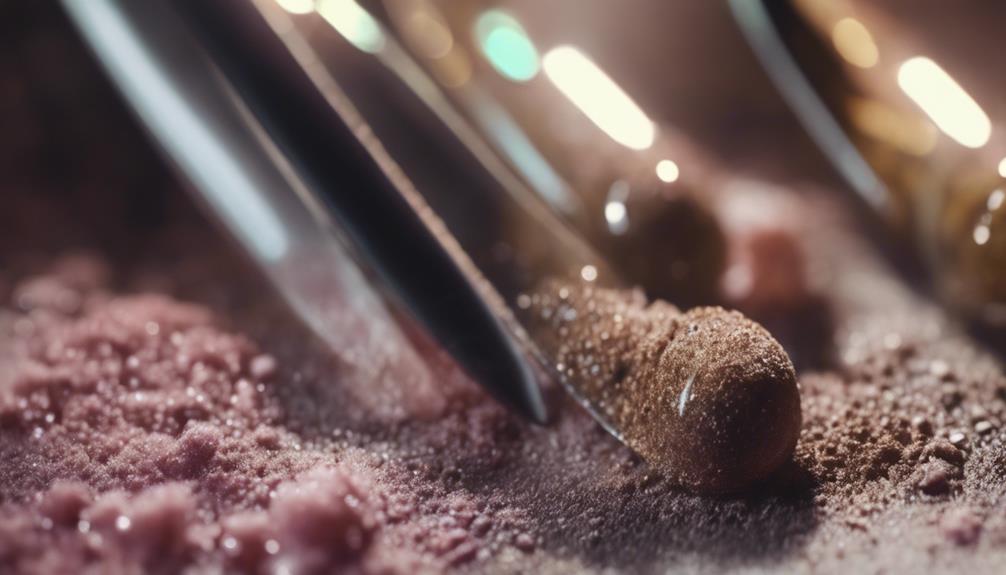
Addressing the cleanliness of fake nails can pose a significant challenge due to their intricate design and hard-to-reach areas. When it comes to cleaning fake nails, several factors contribute to the difficulty, including:
- Curved Shapes: The curved design of fake nails creates crevices where dirt and bacteria can accumulate, making thorough cleaning a necessity.
- Length: Longer fake nails provide more surface area for debris to collect, requiring extra attention during cleaning routines.
- Underneath the Nails: Dirt and moisture can easily get trapped underneath fake nails, necessitating specialized tools or techniques for proper cleaning.
- Decorative Elements: Nail art and embellishments add complexity to the cleaning process, as these intricate details can harbor bacteria if not cleaned effectively.
- Tight Spaces: The spaces between the fake nails and the natural nail bed are often hard to access, making it challenging to maintain optimal cleanliness levels.
Innovative cleaning methods and tools are essential to overcome these challenges and ensure that fake nails remain sanitary and healthy.
Nail Bed Damage
Damage to the nail bed can result from prolonged and improper application or removal of fake nails. The nail bed is a delicate area that plays a crucial role in nail health and growth. When fake nails are applied or removed incorrectly, the nail bed can suffer various forms of damage. One common issue is nail bed thinning, where the natural nail becomes weak and fragile due to the constant pressure and chemicals used during the fake nail process. This thinning can lead to pain, sensitivity, and increased susceptibility to infections.
Furthermore, aggressive filing or scraping during the application or removal of fake nails can cause trauma to the nail bed. This trauma may result in permanent indentations, grooves, or ridges on the natural nail as it struggles to recover from the damage. In severe cases, the nail bed may even become infected, requiring medical attention to prevent further complications. To avoid nail bed damage, it is essential to prioritize proper nail care techniques and seek professional assistance when needed.
Allergic Reactions

When considering the impact of fake nails on nail health, it is important to acknowledge the potential risks associated with allergic reactions. Allergic reactions to fake nails can vary from mild irritation to severe inflammation, impacting both the nails and surrounding skin. Here are some key points to consider:
- Innovative Materials: Some modern fake nail materials are designed to be hypoallergenic, reducing the risk of allergic reactions.
- Customization Options: Innovative technologies allow for personalized fake nails, decreasing the likelihood of using materials that may trigger allergies.
- Patch Testing: Advanced methods such as patch testing can help individuals identify potential allergens in fake nail products before full application.
- Breathable Designs: New breathable fake nail designs promote better air circulation around the nails, minimizing allergic responses.
- Professional Consultation: Seeking advice from nail professionals can help individuals choose fake nail options that are less likely to cause allergic reactions.
Fungal Growth
In the realm of nail care, understanding the potential risks associated with fungal growth in relation to fake nails is essential for maintaining overall nail health. Fungal growth thrives in warm, moist environments, making the space between the fake nail and the natural nail bed an ideal breeding ground. When moisture becomes trapped under the fake nails, it creates a perfect environment for fungi to multiply, leading to infections that can range from mild irritation to more severe complications.
One of the main concerns with fungal growth under fake nails is the difficulty in detecting the early signs of infection. Unlike natural nails, where changes in color or texture are more visible, spotting fungal growth under fake nails can be challenging. As a result, infections may go unnoticed and untreated, potentially causing further harm.
To combat fungal growth, it is crucial to maintain proper nail hygiene practices and ensure that fake nails are applied and removed correctly to minimize the risk of trapping moisture. Regularly cleaning and drying the nails, allowing them to breathe between applications, and promptly addressing any signs of infection are key steps in preventing fungal growth and maintaining healthy nails.
Sanitization Challenges

Amidst the realm of nail care, tackling the issue of sanitization poses significant challenges that demand careful attention and diligence. Ensuring that fake nails are not only aesthetically pleasing but also hygienic is crucial in maintaining healthy nails and preventing infections. Below are some of the key sanitization challenges faced in the realm of fake nails:
- Moisture Trapping: Fake nails can create a barrier that traps moisture underneath, leading to a breeding ground for bacteria and fungi.
- Hidden Dirt: Due to the nature of fake nails, dirt and debris can easily get trapped between the natural nail and the artificial extension, making thorough cleaning difficult.
- Chemical Sensitivities: Some sanitization products may contain harsh chemicals that can be damaging to both the fake nails and the natural nails underneath.
- Proper Drying: Ensuring that fake nails are thoroughly dried after sanitization is essential to prevent the growth of bacteria in moist environments.
- Tool Sterilization: Properly sterilizing tools used in fake nail application is vital to prevent the spread of infections between clients.
Frequently Asked Questions
Can Fake Nails Cause Discoloration of Natural Nails?
Fake nails can potentially cause discoloration of natural nails due to prolonged wear, improper application, or the use of low-quality products. It is essential to follow proper nail care practices to minimize this risk.
How Often Should Fake Nails Be Replaced?
On average, fake nails should be replaced every 2-3 weeks to maintain optimal hygiene and nail health. Regular replacement also allows for fresh designs and prevents bacterial buildup. Embrace new nail trends by scheduling timely replacements.
Do Fake Nails Weaken Natural Nails Over Time?
Yes, fake nails can weaken natural nails over time due to the application process and removal methods. The use of artificial nails can lead to thinning, brittleness, and potential damage. Proper care and maintenance are essential to minimize these effects.
Can Fake Nails Lead to Nail Deformities?
While fake nails can enhance appearance, improper application or prolonged use may lead to nail deformities. Excessive weight, inadequate ventilation, and improper removal methods can contribute to nail irregularities, emphasizing the importance of proper care.
Are There Long-Term Health Risks Associated With Fake Nails?
Long-term health risks associated with fake nails can include bacterial or fungal infections, damage to the natural nail bed, and allergic reactions to chemicals in the products. Proper care and maintenance are essential.

